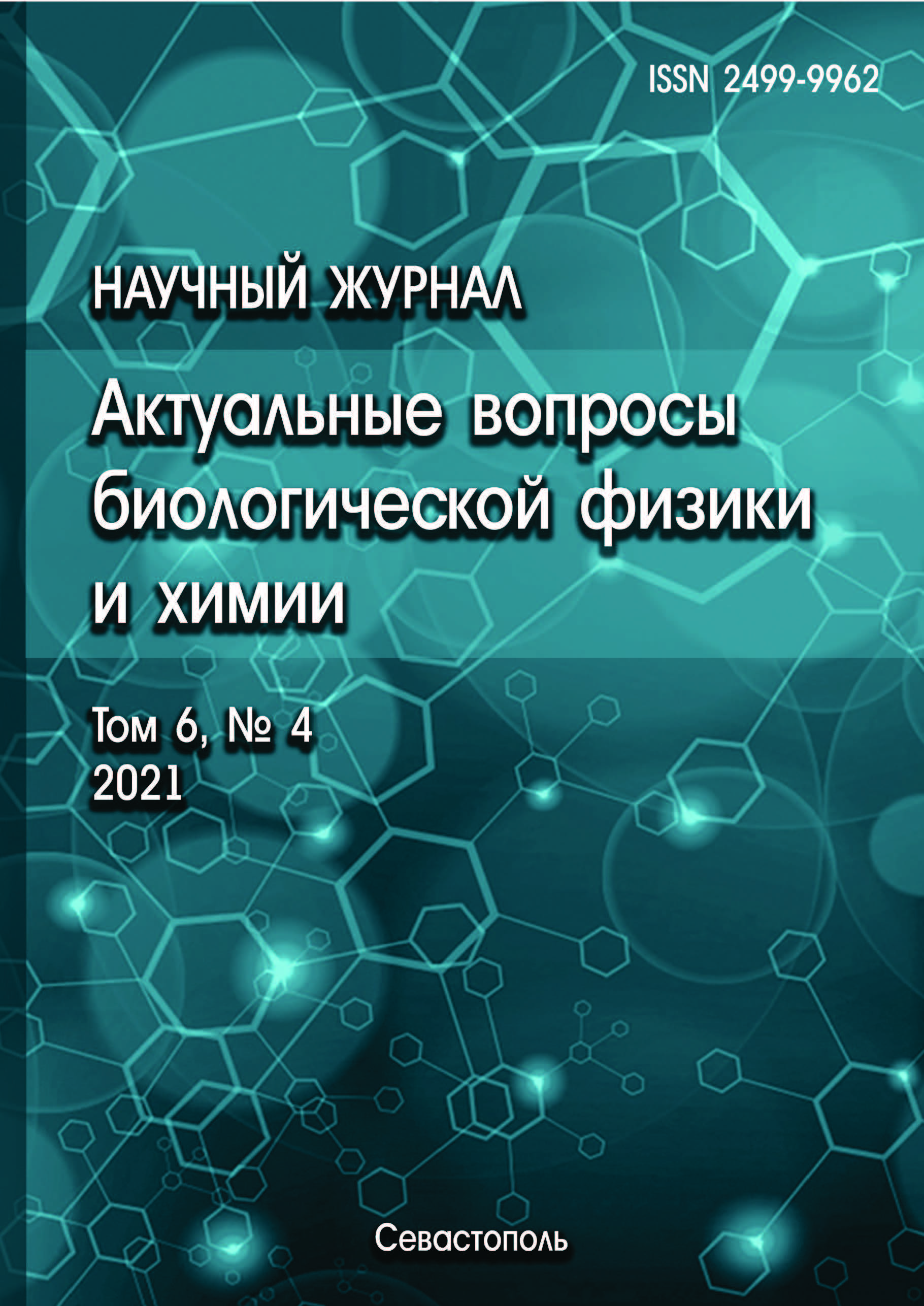The paper is focused on the growth Phaeodactylum tricornutum batch culture in the natural light conditions. The experiments were carried out in the area of the city of Sevastopol in a horizontal photobioreactor in winter. All external factors (temperature, pH, amount of nutrients in the nutrient medium) were in the optimal range for this species. The only variable value was the influx of solar radiation. In the experiment, changes in the Ph. tricornutum biomass and the influx of solar radiation were determined for nine days. It is shown that the average growth rate was 2.37 g DW m-2 day-1. The daylight productivity of Ph. tricornutum was about 4-8 g SV/m2. The averaged value of the night biomass loss was 18 % of the current culture density, and the losses from the daytime gain reached 100%. A comparison of the obtained average productivity of Ph. tricornutum with the literature data showed that the average value is determined by the influx of solar radiation for given geographical latitude. The daylight productivity and night biomass loss is determined by biochemical composition of Ph. tricornutum culture.
microalgae, influx of solar radiation, night biomass loss
1. Benavides A.M.S., Torzillo G., Kopecky J., Masojı´dek J. Productivity and biochemical composition of Phaeodactylum tricornutum (Bacillariophyceae) cultures grown outdoors in tubular photobioreactors and open ponds. Biomass and Bioenergy, 2013, vol. 54, pp. 115-122. doi:https://doi.org/10.1016/2013.03.016
2. Lebeau T., Jean-Michel R.L. Diatom cultivation and biotechnologically relevant products. Part I: cultivation at various scales. Applied Microbiology and Biotechnology, 2003, vol. 60, no. 6, pp. 612-623. doi:https://doi.org/10.1007/s00253-002-1176-4 EDN: https://elibrary.ru/ESFLLN
3. Lebeau T., Jean-Michel R.L. Diatom cultivation and biotechnologically relevant products. Part II: current and putative products. Applied Microbiology and Biotechnology, 2003, vol. 60, no. 6, pp. 624-32. doi:https://doi.org/10.1007/s00253-002-1177-3 EDN: https://elibrary.ru/ESFLLX
4. Kikuchi M., Hirano A., Kunito Sh., Kawakami Y. Fucoxanthin, an antioxidative substance from marine diatom Phaeodactylum tricornutum. Journal of Marine Biotechnology, 1995, vol. 3, no. 1, pp. 132-135.
5. Kim S.M., Jung Y.-J., Kwon Oh.-N., Cha K.H., Um B.-H., Chung D., Pan Ch.-H. A Potential Commercial Source of Fucoxanthin Extracted from the Microalga Phaeodactylum tricornutum. Applied Biochemistry and Biotechnology, 2012, vol. 166, no. 7, pp. 1843-1855. doi:https://doi.org/10.1007/s12010-012-9602-2 EDN: https://elibrary.ru/LAZRJH
6. Alonso D.L., Belarbi E.H., Fernandez S.J., Rodriguez-Ruiz J., Grima M.E. Acyl lipid composition variation related to culture age and nitrogen concentration in continuous culture of the microalga Phaeodactylum tricornutum. Phytochemistry, 2000, vol. 54, no. 5, pp. 461-471. EDN: https://elibrary.ru/AHYDKF
7. Mata T.M., Martins A.A., Caetano N.S. Microalgae for biodiesel production and other applications: A review. Renewable and Sustainable Energy Reviews, 2010, vol. 14, pp. 217-232. doi https://doi.org/10.1016/2009.07.020
8. Kudo I., Miyamoto M., Noiri Y., Maita Y.Combined effects of temperature and iron on the growth and physiology of the marine diatom Phaeodactylum tricornutum (Bacillariophyceae). Journal of Phycology, 2000, vol. 36, no. 6, pp. 1096-1102.
9. Okay O.S., Gaines A., Davie A.M. The Growth of Continuous Cultures of the Phytoplankton Phaeodactylum Tricornutum. Turkish J. Eng. Env. Sci, 2003, vol. 27, pp. 145-155.
10. Borowitzka M.A., Borowitzka L.J. Micro-algal biotechnology. Cambridge: Cambridge University Press, 1992, 481 p.
11. Spravochnik po klimatu SSSR. Vyp. 10. Ukrainskaya SSR. Chast' 1. Solnechnaya radiaciya, radiacionnyy balans i solnechnoe siyanie. L.: Gidrometizdat, 1966, 124 s. @@Handbook on climate USSR. Issue 10. Ukrainian SSR. Part 1. Solar radiation, radiation balance and solar radiance. L.: Gidrometizdat, 1966, 124 p. (In Russ.)
12. Trenkenshu R.P., Lelekov A.S. Modelirovanie rosta mikrovodorosley v kul'ture. Sevastopol': OOO "Konstanta-Print", 2017, 152 s. @@Trenkenshu R.P., Lelekov A.S. Modeling of microalgae growth in culture. Sevastopol-OOO "Konstanta-Print", 2007, 152 p. (In Russ.) EDN: https://elibrary.ru/XTJPCH
13. Trenkenshu R.P., Terskov I.A., Sid'ko F.Ya. Plotnye kul'tury morskih mikrovodorosley. Izv. SO ANSSSR (ser. Biol.), 1981. № 15, vyp. 3, c. 75-82. @@Trenkenshu R.P., Terskov. I.A., Sidko F.Ya. Dense cultures of marine microalgae. Izv. SO ANSSSR (ser. Biol.), 1981, no. 15, vol. 3, pp. 75-82. (In Russ.)
14. Chekushkin A.A., Lelekov A.S., Trenkenshu R.P. Modelirovanie sutochnyh kolebaniy osveschennosti v rayone g. Sevastopolya. Aktual'nye voprosy biologicheskoy himii i fiziki, 2018, t. 3, № 3, s. 547-552. @@Chekushkin A.A. Lelekov A.S. Trenkenshu R.P. Modeling of daily fluctuations of illumination in the area of Sevastopol. Actual problems of biological chemistry and physics, 2018, vol. 3, no. 3, pp. 547-552. (In Russ.)
15. Chekushkin A.A., Lelekov A.S., Gevorgiz R.G. Sezonnaya dinamika predel'noy produktivnosti v gorizontal'nom fotobioreaktore. Aktual'nye voprosy biologicheskoy himii i fiziki, 2020, t. 3, № 3, s. 405-412. @@Chekushkin A.A., Lelekov A.S., Gevorgiz R.G. Seasonal dynamics of productivity in horizontal photobiosynthesis. Actual problems of biological chemistry and physics, 2020, vol. 3, no. 3, pp. 405-412. (In Russ.) EDN: https://elibrary.ru/EQYYLW
16. Avsiyan A.L. Dinamika poteri biomassy v kul'ture Arthrospira platensis (Nordst.) Geitler (Cyanoprokaryota) v temnovyh usloviyah. Al'gologiya, 2014, t. 24, № 3, s. 417-420. @@Avsiyan A.L. Dynamics of biomass loss in the culture of Arthrospira platensis (Nordst.) Geitler (Cyanoprokaryota) under dark conditions. Algology, 2014, vol. 24, no. 3, pp. 417-420. (In Russ.) EDN: https://elibrary.ru/ZSZVFP
17. Torzillo G., Sacchi A., Materassi R. et al. Effect of temperature on yield and night biomass loss in Spirulina piatensis grown outdoors in tubular photobioreactors. Journal Applied Phycology, 1991, vol. 3, pp. 103-109. DOI: https://doi.org/10.1007/bf00003691; EDN: https://elibrary.ru/KLOOXZ
18. Jallet D., Caballero M.A., Gallina A.A., Youngblood M., Peers G. Photosynthetic physiology and biomass partitioning in the model diatom Phaeodactylum tricornutum grown in a sinusoidal light regime. Algal Research, 2016, vol. 18, pp. 51-60. doi:https://doi.org/10.1016/2016.05.014 DOI: https://doi.org/10.1016/j.algal.2016.05.014; EDN: https://elibrary.ru/YDPVXB










